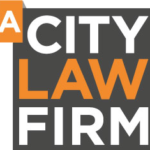When it comes to recruitment, knowing that you have the right person for the role is crucial. That is easier said than done and is often a challenge for employers. Over the years, as technology has advanced, we see Artificial Intelligence (AI) incorporated more in the recruitment process. Many companies use AI with the promise of saving time and cost. Some examples where AI can be used in recruitment are:
- CV Screening: Ai systems can be trained to identify the “ideal” candidate based on their skills, qualifications and even predict their future job performance.
- Targeted advertising of roles: social media platforms can use algorithms to show job advertisement to individuals with particular characteristics (similar to a product can be advertised to a certain demographic.
- Social media scanning of candidates: background checks have been carried out by employers using Ai to search the social media accounts of candidates.
- Analysis of video interviews: Interviewees’ facial expressions and body language are compared to those deemed to be high performers in order to identify the strongest candidates.
AI driven recruitment tools can be great and offer several advantages such as, automate repetitive tasks, sift through large volumes of CVs, and analyse data to identify patterns.
However, with all the benefits which can come with recruitment in Ai, there are also some hidden risks:
- Bias in Algorithm Design: While AI systems may claim to be unbiased, they are only as objective as the data they are trained on. If historical data used to train these algorithms is biased or reflects societal inequalities, the AI system may perpetuate those biases. This can lead to discriminatory hiring practices and reinforce existing disparities in the workforce.
- Lack of Human Connection: Recruitment is not just about finding candidates with the right qualifications; it is also about assessing cultural fit, soft skills, and interpersonal dynamics. AI tools may overlook these essential human aspects, as they often rely solely on quantifiable data and metrics. A lack of human interaction in the hiring process can result in missed opportunities to evaluate a candidate’s intangible qualities.
- Limited Contextual Understanding: AI algorithms typically analyse specific data points and patterns. However, they may struggle to grasp the nuances and context surrounding a candidate’s experiences, motivations, and potential. This limitation could result in overlooking qualified candidates who may not fit neatly into pre-defined parameters.
- Ethical Concerns: The use of AI in recruitment raises ethical questions, particularly in terms of privacy and data protection. Collecting and analysing extensive personal data during the recruitment process may raise concerns about privacy breaches and the potential misuse of sensitive information.
Finding the Balance
While AI can undoubtedly enhance recruitment processes, it is crucial to find the right balance between technology and human involvement. Here are some suggestions for a more balanced approach:
- Define Clear Objectives: Clearly define the goals and expectations of using AI in the recruitment process. Understand its limitations and identify where human judgment and interaction are essential.
- Train Algorithms on Diverse Data: To mitigate bias, ensure that the training data used for AI algorithms is diverse, representative, and free from discriminatory patterns. Regularly review and update the algorithms to account for evolving societal norms.
- Combine AI with Human Judgment: Incorporate human evaluation and judgment at key stages of the recruitment process. Involve experienced recruiters and hiring managers who can assess candidates’ soft skills, cultural fit, and potential beyond what AI algorithms can measure.
- Transparent and Explainable AI: Employ AI systems that provide transparency and explain ability. Understand how the algorithms make decisions and ensure they align with legal and ethical standards. This approach fosters trust and accountability.
- Ongoing Monitoring and Evaluation: Continuously monitor the performance and impact of AI tools on the recruitment process. Regularly review the outcomes to detect and address any unintended consequences or biases.
Conclusion
AI has undoubtedly transformed recruitment processes, bringing efficiency and automation to hiring practices. However, companies must carefully consider the potential risks associated with AI-driven recruitment tools. By adopting a balanced approach that combines AI with human judgment, companies can mitigate bias, ensure a holistic assessment of candidates, and make better-informed hiring decisions. Recruitment is a human-centered process, and while AI can be a valuable tool, it should not replace the critical role that human judgment and intuition play in finding the perfect employee.
Artificial intelligence is one of the fastest growing sectors within tech. It is essential that you take comprehensive legal advice on requirements applicable to you and your business. At A City Law Firm we can produce documentation that will make sure your company is legally compliant and avoid breaches which could be encounter if the correct measure are not in place. It is important to stay updated on the latest regulations and enhancements, as this could impact your business.

